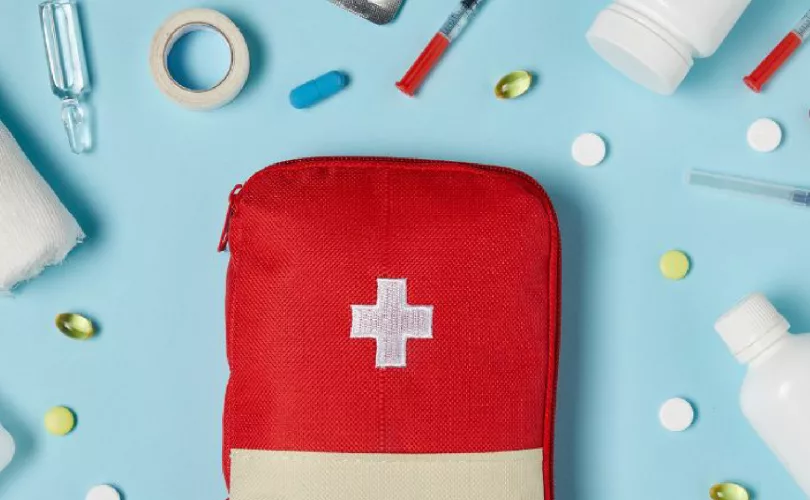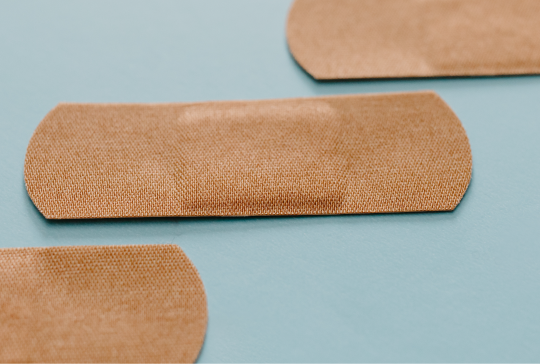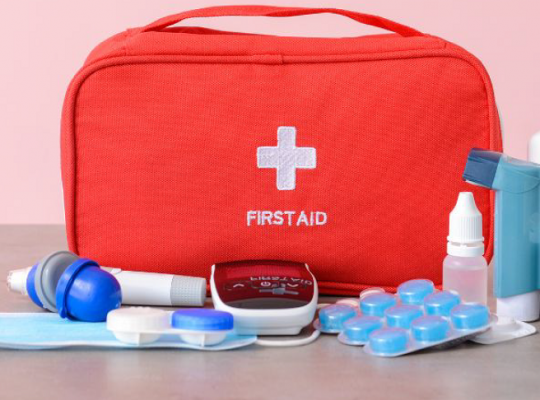One of the best things you can do for yourself is to have an accessible, well-stocked first aid kit that you can pull out anytime. Not only are they fantastic for minor accidents, but they can also be life-savers in an emergency. If you’re experiencing a medical crisis, your first aid kit can help stabilize your issues while you await professional help.
Accidents can happen while we’re at home, running errands, working outside, during strenuous activities, or playing sports—so it’s good to consider owning multiple kits at home and on the road.
Your first aid kit is an emergency toolbox for tackling unexpected bumps, cuts, and scrapes that life throws at you. It’s a collection of essential medical supplies and essential tools that provide immediate care, and the best part is that you don’t have to be a medical professional to use one. A well-prepared first aid kit can make a huge difference in a pinch.
Stocking Up: What Goes in a First Aid Kit
The supplies you pack into your first aid kit can vary depending on your needs. That’s why it’s good to know your health history and your family’s, including any known allergies or pre-existing conditions that need special care. Always carry necessary prescription medications for you and your family. For example, keeping a few spares in your first aid kit is a good idea if you need an EpiPen or an inhaler.
All first aid kits should contain these essential items:
- Assorted Bandages: These sticky wonders are your go-to for minor cuts, scrapes, and blisters. Because cuts can happen anywhere on the body and to anyone around you, it’s wise to have various options for all your needs. Long rectangular bandages are great to wrap around your fingers for cuts, large square bandages work well for abrasions, circular ones cover puncture wounds, and there are even bandages with cooling effects.
- Disinfectant Supplies: Antiseptic wipes and solutions aid in preventing infections and maintaining wound hygiene.
- Gauze Pads and Medical Tape: These are essential for more extensive wounds that require more comprehensive care, such as cuts that are slower to stop bleeding and require gauze and tape to be securely fastened to help.
- Pain Relievers: Ibuprofen and acetaminophen are effective for managing pain and fever.
- Tweezers and Scissors: These tools can help remove splinters and allow you to precisely cut materials such as large bandages, adhesives, and first aid tape to ensure they appropriately cover the surface area of the wound.
- Disposable Gloves: Disposable gloves prevent the spread of germs during wound care, prioritizing your safety.
- Antihistamines: Useful for allergic reactions and insect bites and to relieve congestion, sneezing, itching, and more.
- Burn Cream or Aloe Vera Gel: Soothing solutions for burns, whether caused by heat or sun exposure.
- Face Masks: You can wear a face mask to protect yourself from the spread of germs if you’re treating someone else’s injury, in a large crowd of people, or if you’re sick and don’t want to infect others potentially.
- Instant Cold Packs: These alleviate swelling and numb pain.
- Eye Wash: Essential for flushing out debris or irritants from the eye.
- Thermometer: Useful for monitoring body temperature during illnesses.
- Antidiarrheals: To help treat and relieve diarrhea symptoms.
- Antacids: Sometimes, acid reflux, heartburn, and GERD (Gastroesophageal reflux disease) can seem like cardiac chest pain, but antacids can help relieve their symptoms.
- Hydrocortisone cream: Apply to itchy bumps, inflamed skin areas, and rashes.
- Sterilized spray/water: To wash out wounds.
- First Aid Manual: If you purchase a first aid kit from a store or online, they usually include a manual. Don’t throw this out! This guide can help you perform basic procedures and remedies if you need help with what to do.
- Emergency Contacts: Write down important numbers for local medical facilities, poison control, and personal contacts who can assist if you need additional help.
Maintaining Your First Aid Kit
Now that you’ve stocked your first aid kit, it’s crucial to maintain it regularly. Consider the following practices:
- Routine Inventory Checks: Set a schedule to inspect your kit for items running low, expired, or worn out.
- Replace Used Items: After using supplies from the kit, promptly replenish them as soon as possible. Ask for first aid refills on any prescriptions that are running low. Requesting more before you’ve run out of an essential item is better.
- Purchase or Make Your Own: Various pre-assembled first aid kits can quickly and conveniently be purchased online. You can create your kit that includes your favorites and other items that your local pharmacies and stores carry.
- Accessibility: Ensure that everyone in your household knows the kit’s location to avoid confusion during emergencies.
- Personalization: Customize the kit based on your family’s activities and lifestyle.
- Learn Basic First Aid: Acquire basic knowledge to use the kit effectively. Though it may seem obvious, sometimes it helps to feel more confident in administering first aid after watching a video online or reading instructions and manuals.
- Travel Considerations: Tailor your kit or kits to your destination and research local medical services (such as hospitals and urgent cares) as needed.
Remember, while a first aid kit is valuable and can help in many situations, it’s not always a substitute for professional medical assistance. In severe cases, seek help from medical professionals.
Maintaining a well-stocked and organized first aid kit prepares you to handle unexpected challenges. It’s not merely a box of supplies; it serves as your health protector, safety resource, and source of reassurance. An effectively prepared first aid kit can make a significant difference when a quick response matters.






